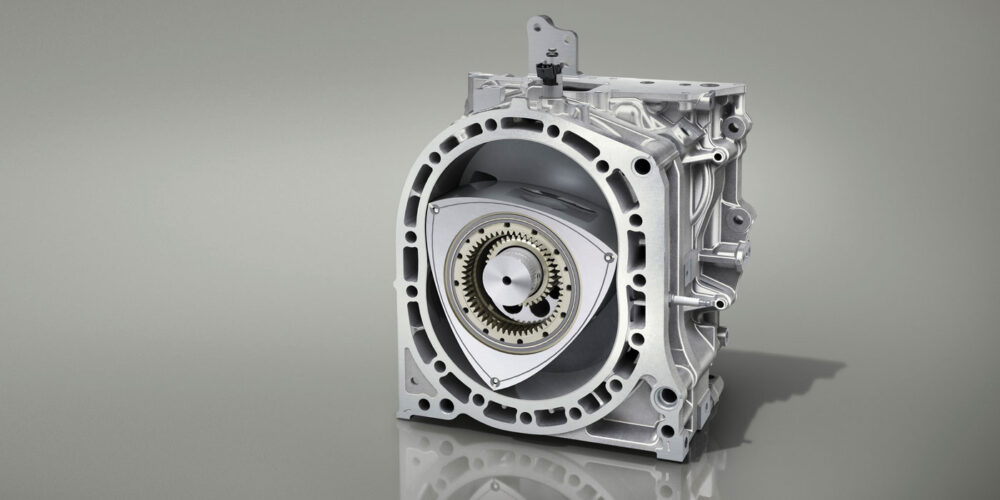It seems like everything old is new again. TV and movie producers love to “reboot” our favorite classics, musicians regularly cover or sample from songs we all know (and sometimes loved). Fashions from high school that make us cringe will be back in style sooner or later.
It can serve to bring us together by introducing younger generations to the things their parents knew and loved, or drive a wedge between us as we argue over which version is better. For the record, I’m the grumpy old guy who argues that the original is always better … but I don’t think I ever expected to see another Mazda with a rotary engine.
The Wankel rotary engine was a unique (if somewhat flawed) design that had last appeared in the 2012 Mazda RX8. Designed by German engineer Felix Wankel in the 1950s, various displacements of the two-rotor engine appeared in Mazda production vehicles beginning in 1967. In addition to the more familiar RX7 and RX8 sports cars, Mazda also produced roughly 15,000 rotary-powered B-series pickups from 1974-1977, and even put its tiny 1.3-liter rotary into a small bus in 1974. A prototype four-rotor engine powered Mazda to a win at LeMans in 1991.
The rotary design is unique in that it only has three moving parts. An eccentric shaft and a pair of three-sided rotors move inside a pair of roughly oval chambers, completing the traditional Otto-cycle of intake, compression, combustion and exhaust without the use of reciprocating pistons or a valvetrain. Instead, the twin rotors spin around the eccentric shaft like a hula-hoop. The secret to the Wankel design is the geometric shape of the rotor, known as a Reuleaux triangle. The fattened triangular shape of the rotor has a constant width, always sealing the chamber in three places throughout the cycle … in theory.
Sealing was an issue for the early Mazda rotary engines, with the apex seals at the three points of the triangle tending to fail. Like a piston ring in a reciprocating engine, the apex seal is responsible for maintaining compression throughout the cycle. This problem dogged the brand for years, but another inherent issue is in the housing design itself.
With the intake and compression strokes occurring at the top of the oval chamber, and the combustion and exhaust events at the bottom, the housing experiences uneven heat buildup. This leads to one of the more confusing cataloging elements of the rotary Mazdas: “leading” and “trailing” spark plugs.
Due to the heat differential between the upper and lower portions of the housing, the stock spark plugs are of different heat ranges. The leading plug (the “lower” position) is a hotter plug than the trailing (“top” position), although some enthusiasts prefer to run trailing plugs in all four positions. (Each rotor/chamber houses a pair of plugs.)
Inability to meet increasingly strict fuel-efficiency and emissions requirements ultimately killed the original rotary engine, but in 2023, Mazda resurrected the design. A single-rotor 830cc Wankel engine can now be found in the Euro-spec MX-30 e-Skyactiv R-EV plug-in hybrid. Unfortunately for RX enthusiasts, the engine serves only as a range extender for the PHEV variant of the MX-30, powering a generator rather than powering the drivetrain directly.
With improved compression, gasoline direct injection and an EGR system, this engine is much cleaner and efficient than previous rotaries. We’ll see if this improved technology can make its way back into the U.S. market, but for now, the European-engineered Wankel rotary engine has returned to its roots, thanks to the Mazda engineers who have believed in this funky little powerplant for nearly 60 years.













